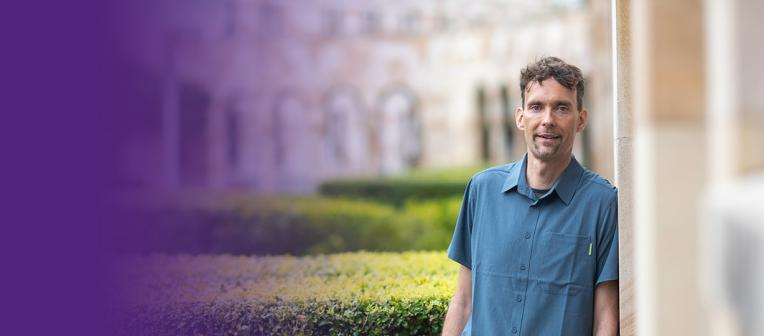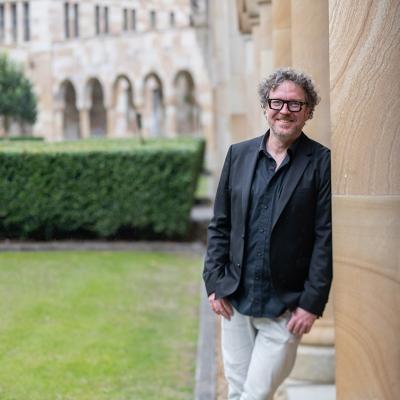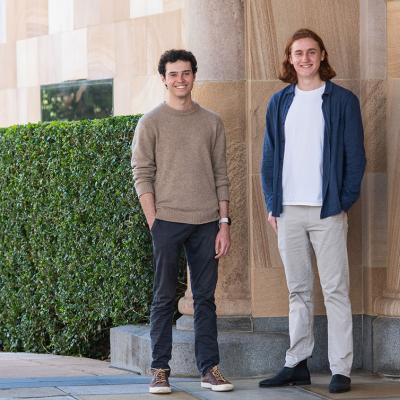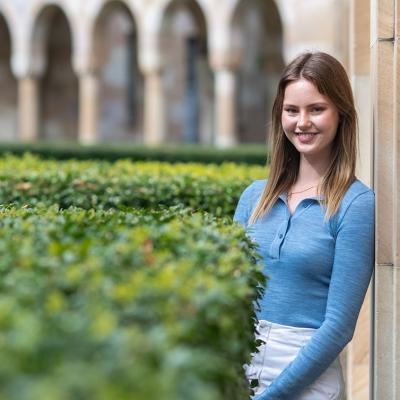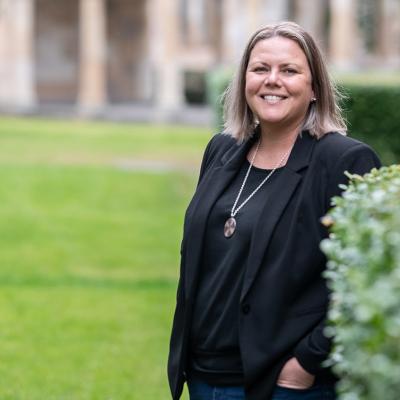The world is producing more plastic waste than ever – more than double what we were producing just 2 decades ago. Only 15% of plastic waste is collected for recycling, and only 9% is recycled successfully.
Between alarming statistics like these and the depressing images of sea life entwined in plastic waste, it’s tough to stay optimistic about a green future.
Fortunately, people like Dr Chris Rinke exist – people who are actively seeking solutions to the plastic crisis.
And sometimes these potential solutions come from the most unexpected places.
Introducing the superworm (not technically a worm, but 100% super)
As an active microbiology researcher and a former Senior Lecturer for UQ, Chris has worked on countless projects. One of these projects focuses on a particular insect’s larvae, known as superworms, and their unique ability to digest polystyrene.
“Insect larvae have strong mouthparts,” says Chris.
“So, while we didn’t know if the superworms can eat polystyrene when we started the experiments, we had high hopes that they would manage to eat the plastic.”
As it turns out, the superworms didn’t just survive on polystyrene – they thrived.
“We worked with over 170 superworms, divided into 3 groups with different diets: wheat bran, polystyrene, and no food,” says Chris.
“The superworms survived on a polystyrene diet and even gained a small amount of weight, which indicated that they can gain energy from eating the plastic.”
Wait, so the superworm isn’t a worm?
“It’s officially called a superworm, but it’s actually an insect larva,” says Chris.
“If you look very closely, it has 6 legs, so it’s definitely an insect.”
Specifically, it’s the larvae of the darkling beetle, Zophobas morio.
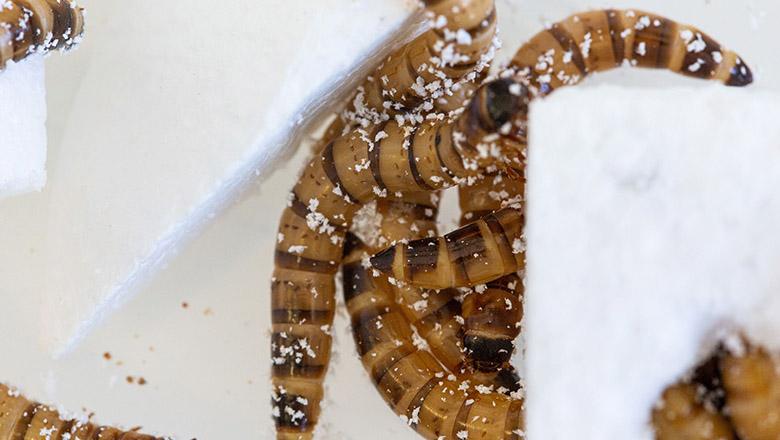
How do these superworms do it?
Superworms are voracious eaters and not too fussy, so they’re able to efficiently shred through polystyrene.
However, Chris is quick to point out that the true ‘hero’ isn’t the superworm itself – it’s the bugs within the bug, or the bacteria that live in the superworm’s gut. These are responsible for degrading the plastic.
“We used a powerful technique called metagenomics to recover the DNA from all gut microbes and to sequence it,” says Chris.
“This allowed us to recover microbial genomes and to show that they encode enzymes involved in the polystyrene degradation.”
Or to put it more simply for us non-science folk, Chris’s research team discovered that the superworm and its gut bacteria form quite the dynamic duo. The superworm breaks the plastic into mouthfuls to eat, and then the gut bacteria break it down further to produce energy and carbon for growth. Sometimes there’s still a little bit of polystyrene left in the, uh, leavings, but the superworms aren’t shy about putting that plastic through a second cycle (by eating it again).
This all sounds a bit gross. Is it?
For some of us, maybe.
Chris, however, is unfazed – though he does enjoy observing the different ways people respond to seeing the superworms in action.
“I originally studied zoology, so I’m used to working with insects,” he says.
“However, it is interesting to see the wide range of reactions of people when they first see the superworms. Some students told me they look cute, others think they are gross, and I also know of an overseas company that sells roasted, chocolate-covered superworms as a popular snack. So, it all depends on the perspective.”
“For us, they are promising insects that can help to solve the plastic waste crisis – and yes, we do get a bit attached to them after working with them for a while!”
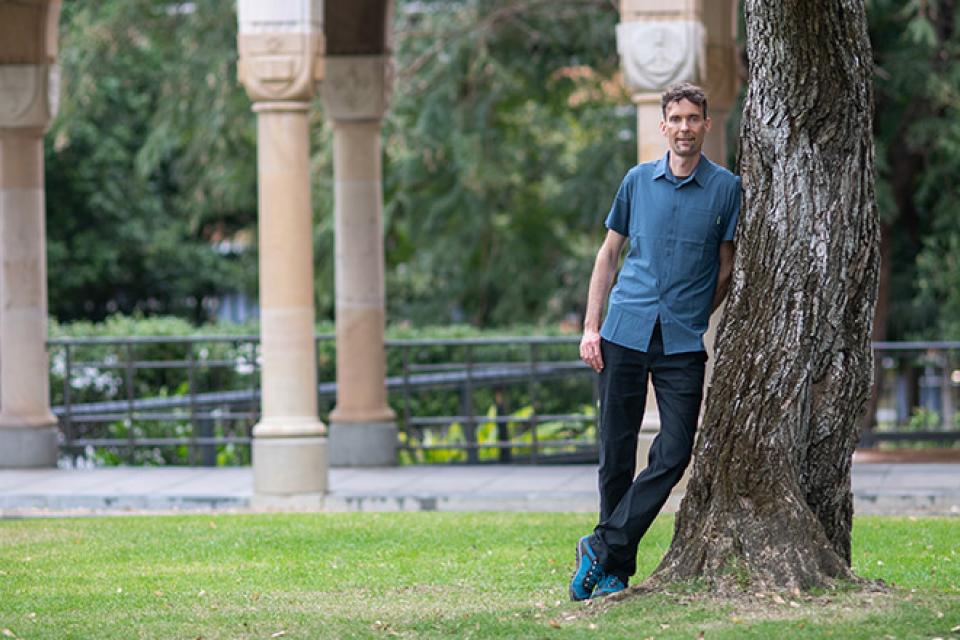
OK, but what’s next?
Chris believes the microbes in a superworm’s gut could hold the key to better recycling of plastic waste.
“We plan to investigate the enzymes with polystyrene-degrading capabilities to find the most efficient enzymes,” he says.
“Ultimately, we want to create an artificial superworm – a device that first mechanically shreds the plastic waste, followed by further degradation by microbial enzymes.”
The broken-down materials could then be used to create new polystyrene or perhaps even fed to other microbes to produce valuable compounds like bioplastic.
“We envision that this upcycling approach will make plastic recycling more economically feasible and should increase the amount of plastic that is recycled.”
More funding is required, and the project’s true potential could take 5 years or more to come to fruition, but this is already an incredible breakthrough. Because while artificial superworms might sound like creatures of nightmares, they may just be a dream come true for Earth’s future.
"Everybody wants to contribute to live on a safe and clean planet, and I think as scientists – as microbiologists – we can do our part to achieve that," says Chris.
What sparked Chris’s interest in this line of research?
With Chris’s background in zoology and microbiology, studying insects and microbes is nothing out of the ordinary. But what pushed him to specifically search for a solution to plastic waste?
After completing his PhD in Vienna and working in two different postdoc positions in the US, Chris took a year off with his wife Alena in 2014. They’d spent much of their weekends mending an old sailboat, the Green Panther, and it was time to put it (and themselves) to the ultimate test – a 40-day voyage across the Pacific Ocean.
While this trip would ultimately land them in Queensland, it was a detour to a tiny island in French Polynesia that sparked Chris’s motivation to do something about the plastic crisis. After a week of snorkelling and swimming, Chris and Alena decided to thank the island with a beach clean-up – a task that saw them fill two large garbage bags far too quickly and easily.
“I was just sad to see so much garbage had made it onto the shores of a tiny uninhabited island in the middle of the ocean,” says Chris.
“That’s when my interest was really kindled and I knew we have to do something about the plastic waste crisis. There are beautiful places out there, but unfortunately you cannot escape plastic debris anywhere in the world.”
The students, teachers and academics at UQ are solving tomorrow’s problems today – by making scientific breakthroughs like Chris, but also by developing innovative startups, using design thinking to solve chronic problems, reinventing school teaching, working towards peace in the world, and so much more.
Discover our undergraduate science programs Explore all our undergraduate programs

